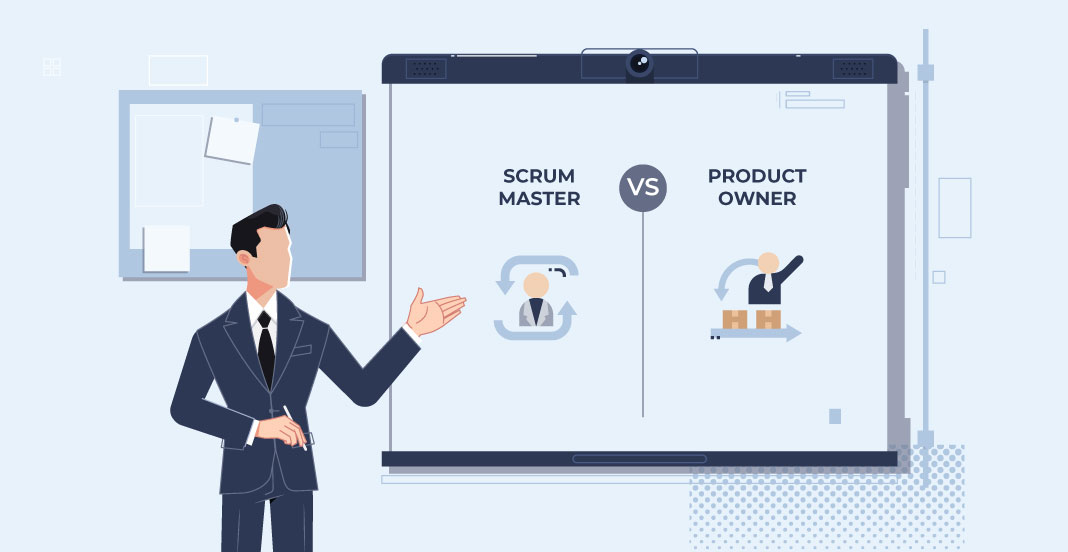04.26.2024
Your Complete Guide To Scaled Agile Framework Certification

Posted by Marbenz Antonio on June 20, 2022

What are the important components of a project’s interaction between the Scrum Master and Product Owner – and why does it matter?
When employees in each capacity display the Scrum principles of commitment, boldness, focus, openness, and respect, success tends to follow. These tend to establish a strong bond between the two positions; cracks begin to appear without them.
People in these positions need to get off on the right foot together: it makes the work more enjoyable, and when there are delivery issues, a good connection helps everyone work together to reach the correct outcome.
The Product Owner’s role in a Scrum project is to understand the company, stakeholders, what customers or users need, and the path a product should follow to provide the most value. The Product Owner successfully communicates the product’s goal, vision strategy, and the value it will provide so that the team can collaborate with the Product Owner to maximize the value of the product. This position also includes excellent Product Backlog Management, which ensures that the team knows the priorities and effort required to effectively plan for the Sprint and meet the Sprint’s goals.
Meanwhile, the Scrum Master’s role and responsibility are to ensure that the entire team is capable of delivering the product, as well as to assist all stakeholders in understanding Scrum as defined in the Scrum guide, namely, to act as a change agent, enabling both the organization and the Scrum team to collaborate effectively.
This covers two main aspects:
First and foremost, it is about ensuring that everyone has what they need to execute their work while removing roadblocks and promoting the Scrum technique and so-called “ceremonies.” These include sprint planning, daily stand-up, sprint review, and so on in an Agile context.
The Scrum Master grows themselves, trains the team on an individual or group basis, and shares learnings with other Scrum Masters in a community of practice — a venue for sharing the good, bad, and ugly of what they’ve learned.
While the jobs are different, there must be a natural link between them. The Scrum Master should understand the end-user and the product’s requirements. In contrast, the Product Owner should be aware of any delivery problems so that they can prioritize and help the delivery team maximize value.
One of the most serious threats to a Scrum project posed by the Scrum Master/Product Owner relationship is a loss of focus.
If they, and therefore the team, lose focus and this problem is not handled, the final goal is endangered. Identifying the risk necessitates the team being transparent in whatever it does, i.e., having the courage to recognize problems and find solutions to them.
Lack of communication is another important “red flag” in the Scrum Master/Product Owner interaction.
People in these two jobs, like the comic book characters Batman and Robin, must be a fully functional team – which involves maintaining excellent communication, creating mutual understanding, and being honest and open with each other. In this manner, anything overlooked in the project will not go ignored.
Starting a new project might be intimidating, especially if the Scrum Master and Product Owner have never worked together before.
Because there is a learning curve, it is essential to get to know each other as soon as possible and begin to create the required trust in the relationship.
Aside from the apparent human component of communication, some activities can help in working methods. For example, creating a matrix of all the positions in the team and having everyone provide a brief assessment of how they see the roles of others (as well as their own).
This activity might extract the team’s expectations, such as what the Scrum Master should do to assist them. When a job becomes the center of conversation – with common themes or worries surfacing from different people on the team – it implies the person in that capacity may directly address those questions and better understand what people require.
The importance of this feedback may be applied equally to a Product Owner, beginning to establish a better relationship between them and other team members.
As a result, everyone should get focused on the same issue, which is important to an Agile strategy.
The Scrum Master-Product Owner connection is so obvious to individuals both inside and outside the team that it must function well.
This mutually beneficial connection is especially important when interacting with top stakeholders. When the Scrum Master and Product Owner agree on what the product and its features are capable of, they can provide a unified message to senior management and obtain any assistance that is required.
Finally, a Scrum team has several relationships inside it. The Scrum Master/Product Owner connection is one of several, but you won’t go far wrong if you continuously review yourself and your team’s alignment to the values.
Here at CourseMonster, we know how hard it may be to find the right time and funds for training. We provide effective training programs that enable you to select the training option that best meets the demands of your company.
For more information, please get in touch with one of our course advisers today or contact us at training@coursemonster.com
